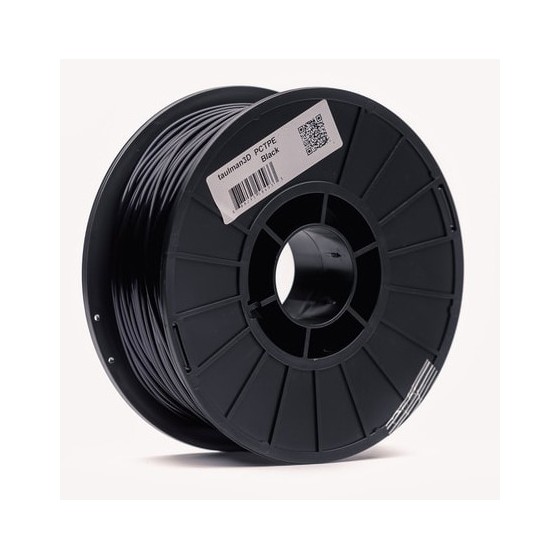w3c



 Service local
Service local
Un service personnalisé en français
 Politique de livraison
Politique de livraison
Livraison rapide en Belgique et en France
 Technical support
Technical support
Technical support and warranty directly from Slice3D
PCTPE is an extremely flexible and durable TPE- and nylon-based filament. PCTPE was developed to manufacture both highly flexible additive with a durability of nylon. The individual outer layers can be transferred into a round shape without deforming or splitting. Produce at a lower 3D printing temperature than our nylons. 3D printing PCTPE easily on any 3D printer, process it at only 225° C - 230° C. Although the nylon is very flexible and comes in 1.75mm filament, it is not a problem for direct drive or Bowden feeding systems. Our testers determined this result because each sample had a filament diameter of 1.75 mm.
PCTPE is strong enough to retain its shape during welding while being flexible enough not to tear or break. Even if it hits a table or lateral forces are exerted on the component.
Today we release our new highly flexible 3D printing material PCTPE. PCTPE stands for "Plasticized Copolyamide TPE" or a chemical copolymer of highly flexible nylon and TPE (thermoplastic elastomer). PCTPE has several unique properties that allow any user to 3D print a highly flexible part with the added durability of our nylon polymers. This combination of polymers has been specially developed so that anyone using the latest FFF/FDM 3D printers can process this material. Finished parts such as durable prostheses, portable wearable outfits, mobile phone housings and highly flexible utility / industrial parts. The flexibility of PCTPE means that the end components have the smooth glossy texture of nylon and an additional flexibility offered by a rubber-like TPE. Nevertheless, the manufactured components are of high durability and have the advantage of a high durability, like all Taulman3D printing materials.
Since some users had difficulties processing 1.75 mm flexible materials, we worked with our manufacturer to perform an additional "drawing" process. A process that stretches the material during the last manufacturing phase. This is a similar process used to produce a large nylon rope for maintenance in the dock of cruise ships. This additional elongation increases the tensile properties of the unprocessed 1.75 mm and 2.85 mm filament so that the tendency to fold or buckle is eliminated. Some of our testers have noticed that the non-processed filament was stiffer than the 3D printed parts! This additional process step enabled us to increase the proportion of TPE, resulting in a material that offers the user a wide range of design flexibility. This depends mainly on the nozzle size, the number of outer layers and the percentage of internal filling used during slicing. Use this filament to create filigree components ranging from thin as paper to thicker shoe soles with exactly the right flexibility. PCTPE is an easy to 3D print material. It meets an extensive list of user requirements.
The addition of TPE and a new low-temperature nylon brings PCTPE to the slicer software settings most of us use for ABS. 230 ° C 3D printing temperature and other ABS settings, defined by the nozzle diameter and 3D printer type.
PCTPE ensures that you do not need any closed installation space just to achieve excellent layer adhesion of 100 mm to 1,000 mm+. With PCTPE you can use layer bonding technology to produce individual outer walls and bend or fold them along the printed axis without deformation or splitting.
It is known as a pleasantly wearable material. We have made sure that PCTPE's 3D printed texture is as smooth as any portable nylon. This shiny texture is the key to creating new portable objects that move with body movements. In addition to the glossy texture, the flexibility of PCTPE for complex portable designs is more pleasant.
Buy here plasticized copolyamide TPE filament for your 3D printer. The material is very flexible and durable.